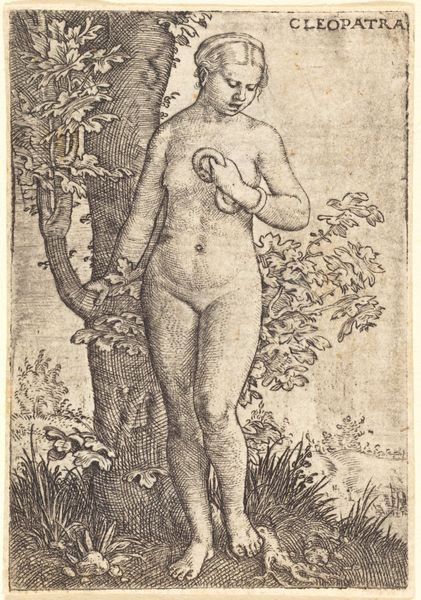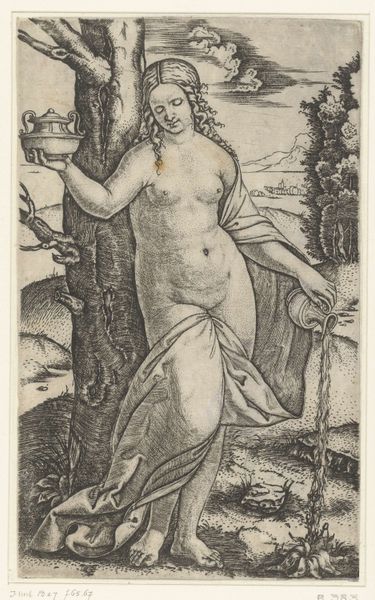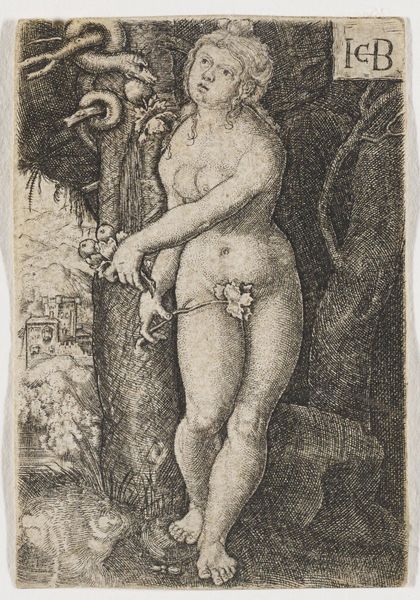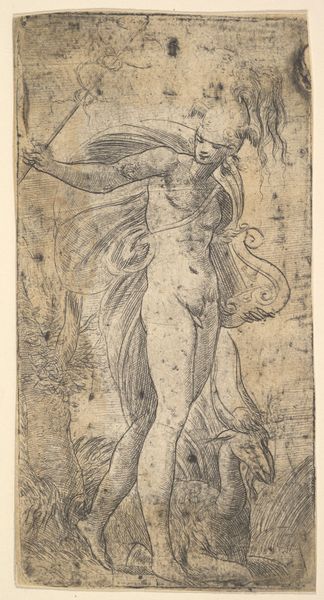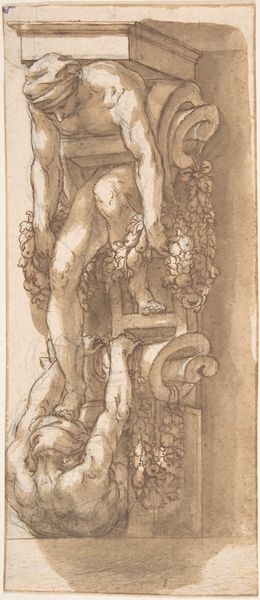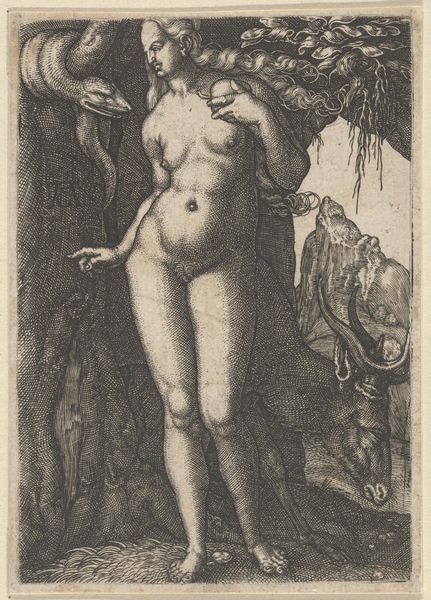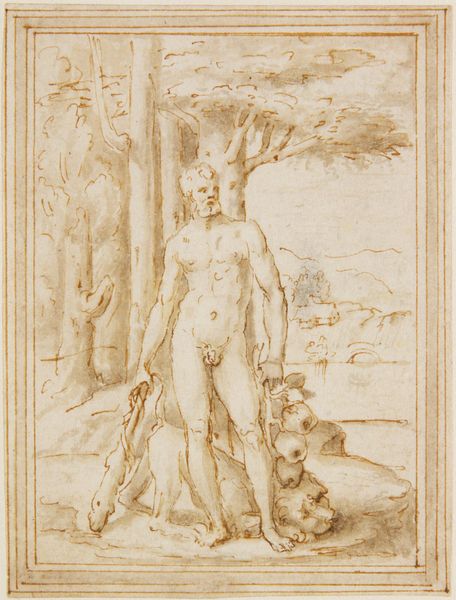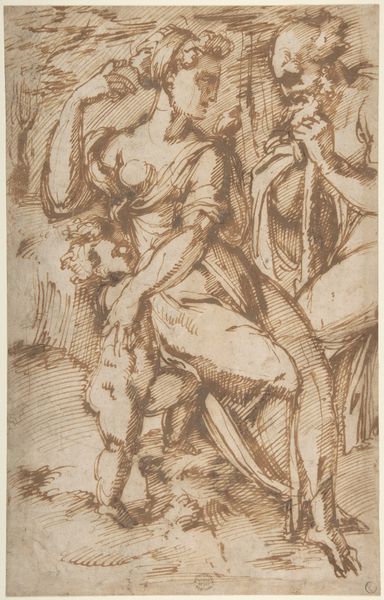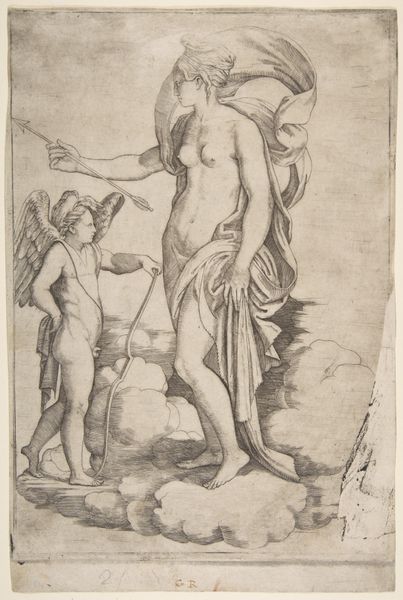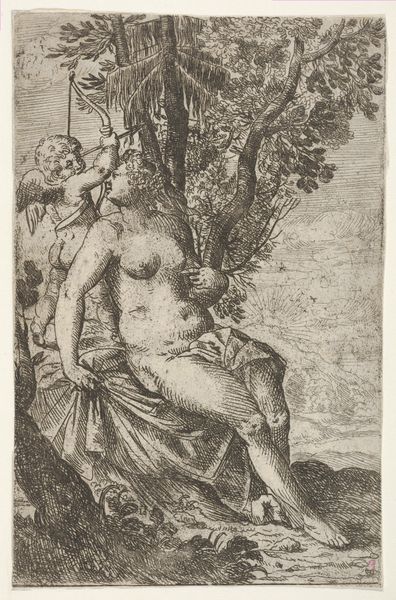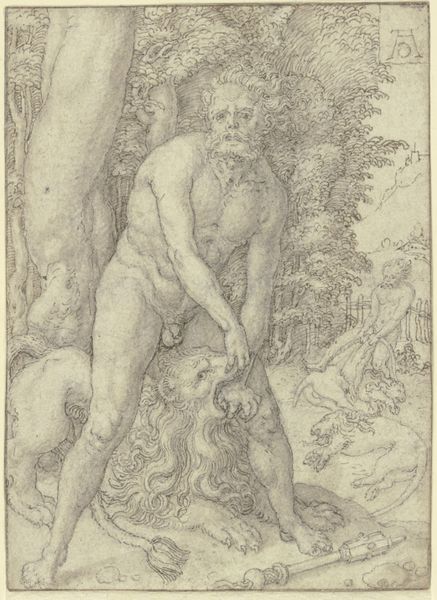
A woman watering a plant, a pot in her raised right hand 1502 - 1513
0:00
0:00
drawing, print, charcoal
#
drawing
# print
#
charcoal drawing
#
figuration
#
11_renaissance
#
charcoal
#
italian-renaissance
#
nude
Dimensions: Sheet: 7 1/2 × 4 5/8 in. (19.1 × 11.7 cm)
Copyright: Public Domain
Curator: Marcantonio Raimondi's charcoal drawing, “A woman watering a plant, a pot in her raised right hand,” dating from the early 16th century, currently resides in the Metropolitan Museum. A piece of the Italian Renaissance, wouldn't you agree? Editor: Absolutely. I must say, I'm struck by the tenderness of this scene. The figure is classical, nude and draped in fabric, yet there’s a simple intimacy as she nourishes this delicate plant, you feel transported. Curator: Indeed. The very delicate strokes of the charcoal enhance that, allowing for a beautiful balance of line and shadow, don't you think? If we consider its Italian Renaissance context, how might this integrate with prevailing attitudes toward form and beauty? Editor: Oh, without a doubt. The body is idealized, of course. This immediately aligns the subject with classical ideals. But what intrigues me is the vulnerability suggested by the slightly lowered gaze and posture. It brings a depth to the representation, something other than detached perfection. The work feels deeply observed. Curator: Precisely, one might even delve into a semiotic interpretation; the plant as a symbol of fertility, of growth, juxtaposed with the nude form representing purity, perhaps? Do you subscribe to the symbolism or find other readings relevant? Editor: I think there’s an element of Arcadian bliss to it all. It's also about nature in its sublime, fertile state. We get a glimpse of both idealised human and organic elements blending into a peaceful reverie. It is not always so explicit; there's an underlying emotion the Renaissance did very well. Curator: I'm also quite drawn to the spatial relations—or rather, their slight ambiguity. The figure blends, contrasts. Don't you concur? The formal decisions feel so calibrated, each area contributing significantly to the viewing experience. Editor: You’re right. The lack of strong contrast gives it all a kind of ethereal unity. Nothing shouts, everything whispers. It’s a meditative, even dreamlike image, don't you think? And so fitting that it’s executed in humble charcoal. Curator: It's remarkable how Raimondi manages to harness so much beauty and resonance using relatively minimal means. I appreciate the dialogue. Editor: And I, the invitation to slow down and truly see.
Comments
No comments
Be the first to comment and join the conversation on the ultimate creative platform.
